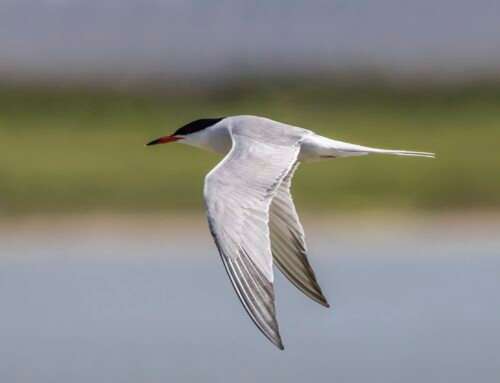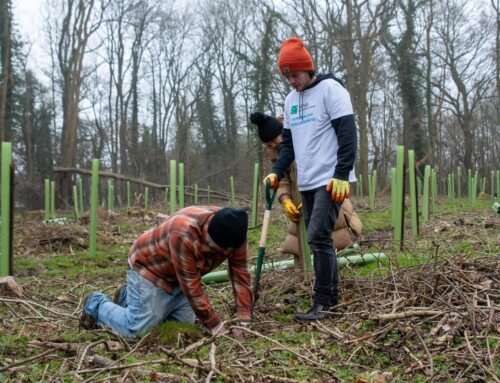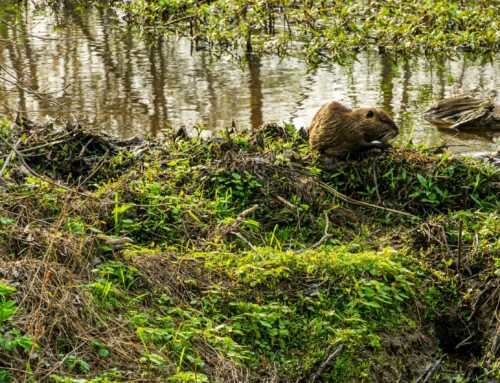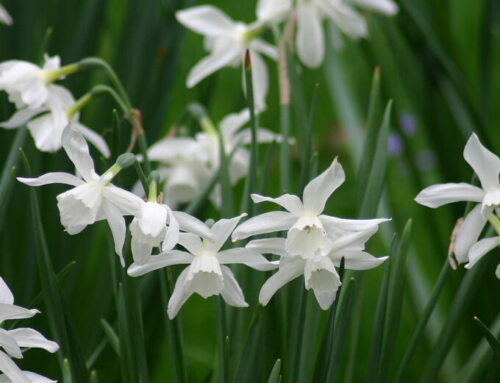A Care Guide for Potted Plants
On a day-to-day basis, I get many people asking if they can keep their plant in a pot since they happily stay in containers in the nursery. This is a fair question but certain care guidelines need to be followed to ensure that your plant thrives in its new surroundings and doesn’t succumb to the failings that are often seen when the wrong plant is kept in a container.
Firstly, the species of plant is important. A plant that has the internal vigour to grow large may not be suitable. To keep it in a sensible-sized container that is manoeuvrable, you may well need to prune the plant and not all species enjoy this treatment. Larger trees that can be kept pruned include Quercus ilex (holm oak), Carpinus betulus (hornbeam) and Fagus sylvatica (beech). To keep a plant small, prune in high summer as this will not promote reactive growth, unlike winter or spring pruning.
There are some lovely evergreens that can be pruned and are slow growing so ideal for containers. Plants grown as topiaries, such as Prunus lusitanica (Portuguese laurel), Viburnum tinus and Taxus baccata (yew) do well in containers and look stunning on either side of a main door or archway. The repeated pruning of a topiary plant, be it a low-growing ball shape, a lollipop or something more complicated, keeps the roots smaller so they are less likely to grow out of the pot they are potted into. Ilex crenata (Japanese holly) is a popular Buxus (box) replacement that struggles on heavy, wet soil but as you can add gravel or sand to your growing medium, this often does better when grown in a pot.

By Libby Reeves, Head of Horticulture
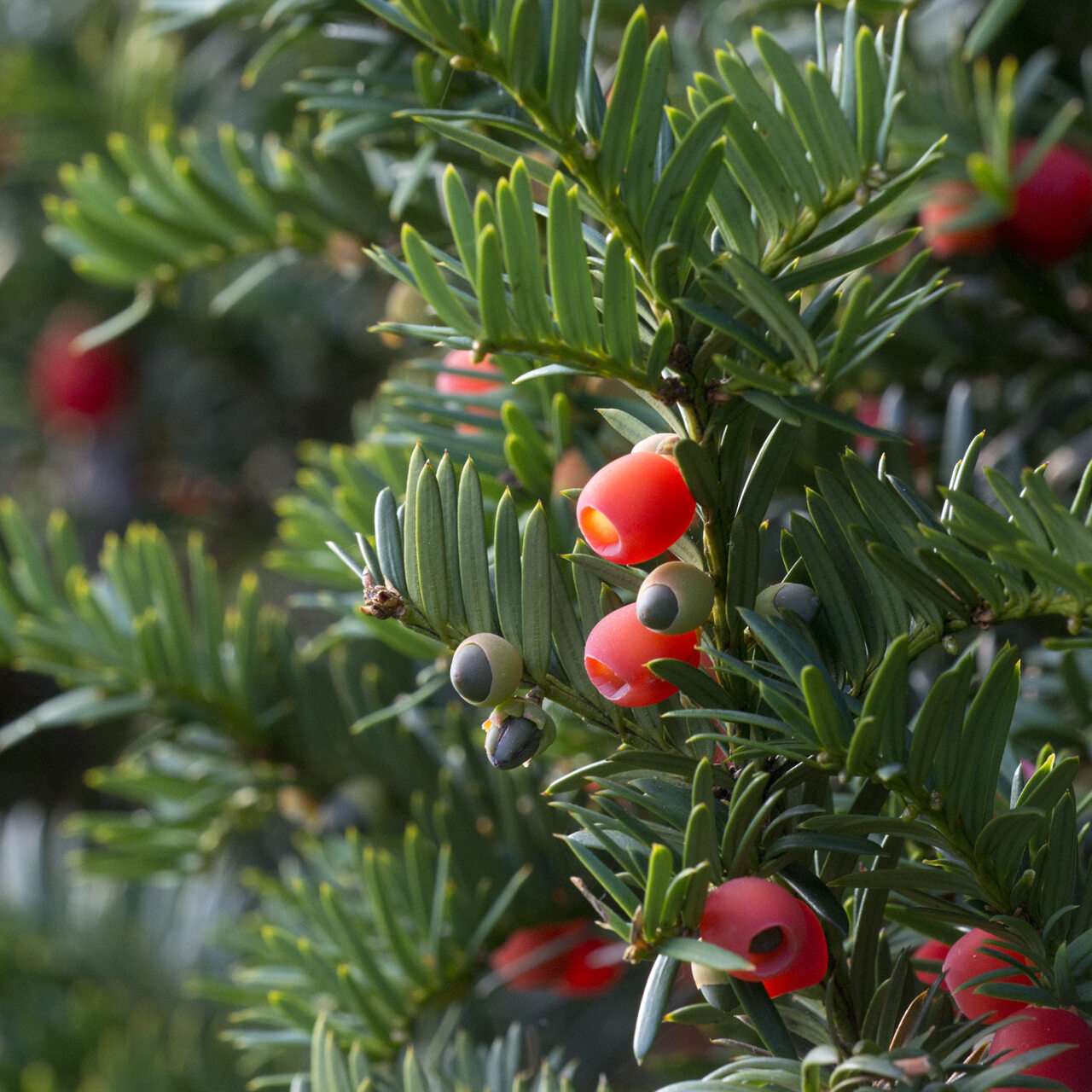
Taxus baccata
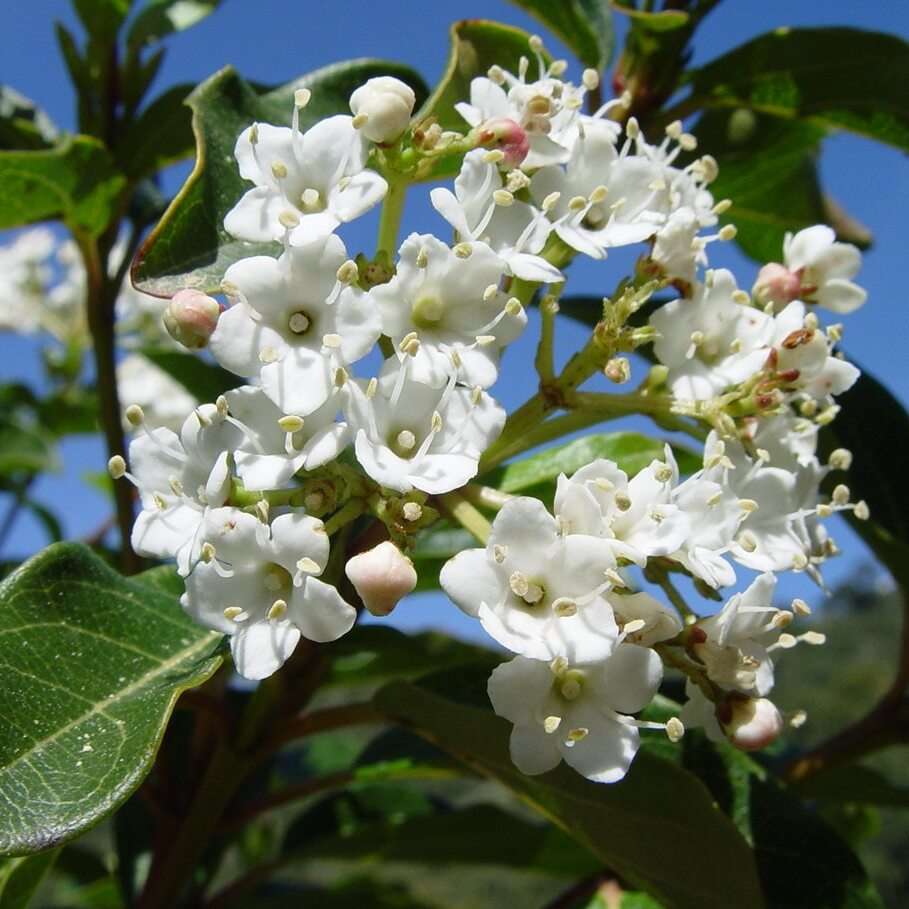
Viburnum tinus
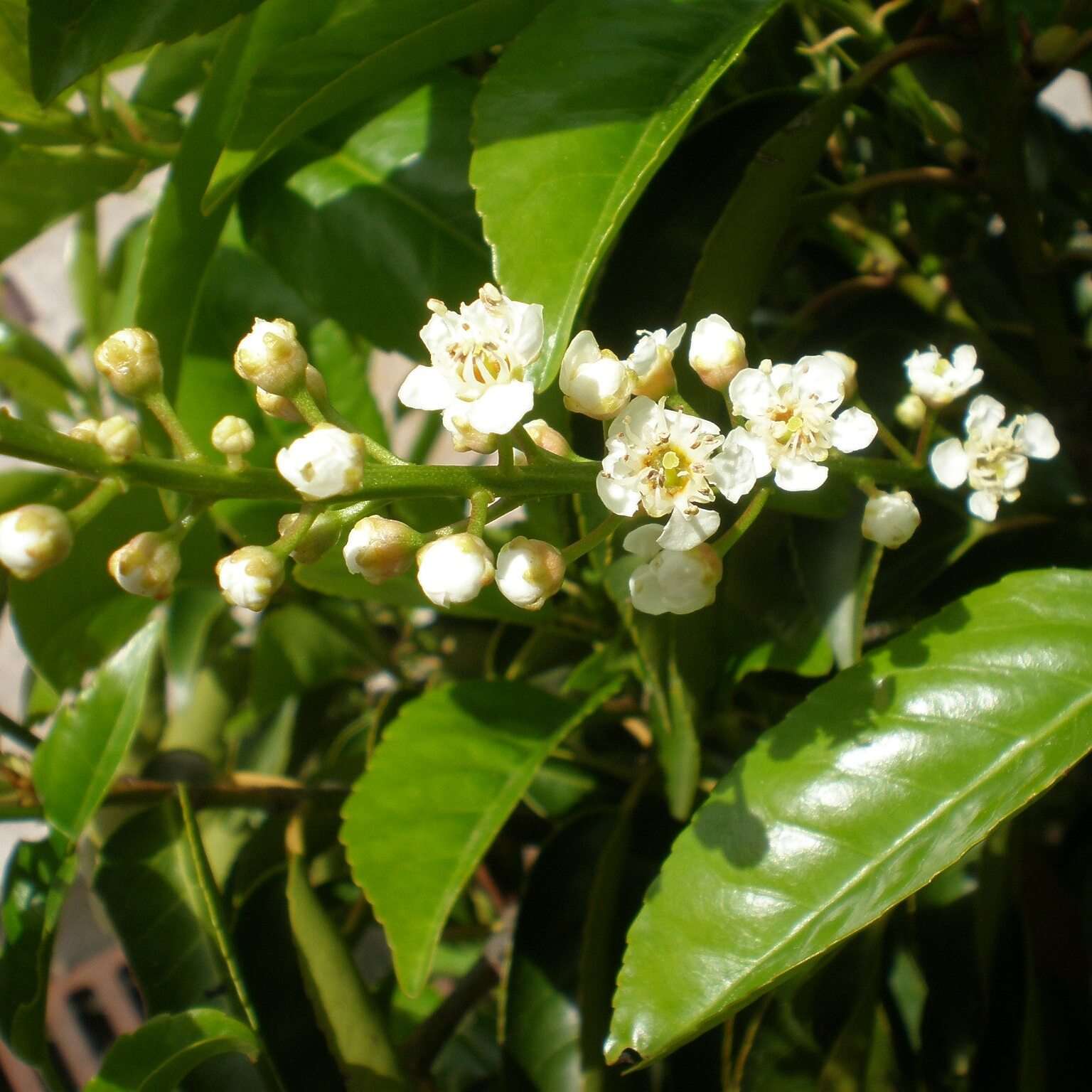
Prunus lusitanica
Alternatively, you could aim for a naturally smaller plant which should keep the pruning maintenance lower. If you are keen on fruit, a tree can be sourced on a smaller, less vigorous rootstock. These are trees that are grown to be small but high-yielding, maximising the amount of fruit you can get per plant. Once they have reached their maximum size, they only ever need a tidy prune in late summer to remove any dead, diseased or damaged branches. There are some lovely ornamental fruit trees on smaller rootstocks. Cherries are the obvious cases here with stunning spring blossoms.
Getting the container right is also important. Usually, the rule is to pot up to about a third larger than the original pot but the larger the plant, the bigger you can go. To add to this, the more vigorous and wet-tolerant the plant, the larger the container you require. I will soon be potting up some laurel hedging plants and I would happily take a 35L plant into a 65L container as they are vigorous and appreciate the extra moisture. The 7.5L yew will more likely go into 10L as it prefers to be drier and is much slower growing. I would then prune the laurel back hard to ensure that it can stay in the pot for longer. The yew, however, I would not prune at all but simply allow it to root into the new container in the new compost. Take care not to over-pot plants, as the compost will sit wet and potentially cause the roots to rot back. The 7.5L yew into the 65L laurel pot would run this risk.
Every few years, you will need to change some compost so being able to gently push the pot onto its side can assist with this as the plant can be removed, root-pruned where necessary and replaced with fresh growing medium. For very large containers, sometimes it is easier to just dig out as much compost with your hands and then replace where you can.
Getting the growing medium right is important and generally, a soil-based compost is your friend. This can be mixed with some multipurpose or some tree and shrub compost. We sell a fantastic brand called Melcourt who do an excellent version of those mentioned above. Some drainage in the bottom is useful, particularly for species that don’t like to get too wet. It is also important to ensure the container holes don’t get blocked. Pot feet are excellent for promoting drainage. Finally, a good layer of mulch, such as gravel or fine bark, will help to keep the moisture in and the weeds out which is so helpful when growing in a pot.
The day-to-day and week-to-week maintenance for a container grown plant is a little more than for a plant in the ground. Regularly checking the growing medium to ensure it is suitably moist is vital. Rain is often not enough to cover the exposed surface of the container, particularly if there is a lot of foliage in the way. Regular watering is a must when required. Alongside watering, feeding is also important. There are some excellent multipurpose container feeds available that can be put in as a pellet or top-dress. Early spring, mid-spring and late summer are the best time to feed, unless using a liquid fertiliser such as seaweed, where you may need to be feeding up to every 2-3 weeks.
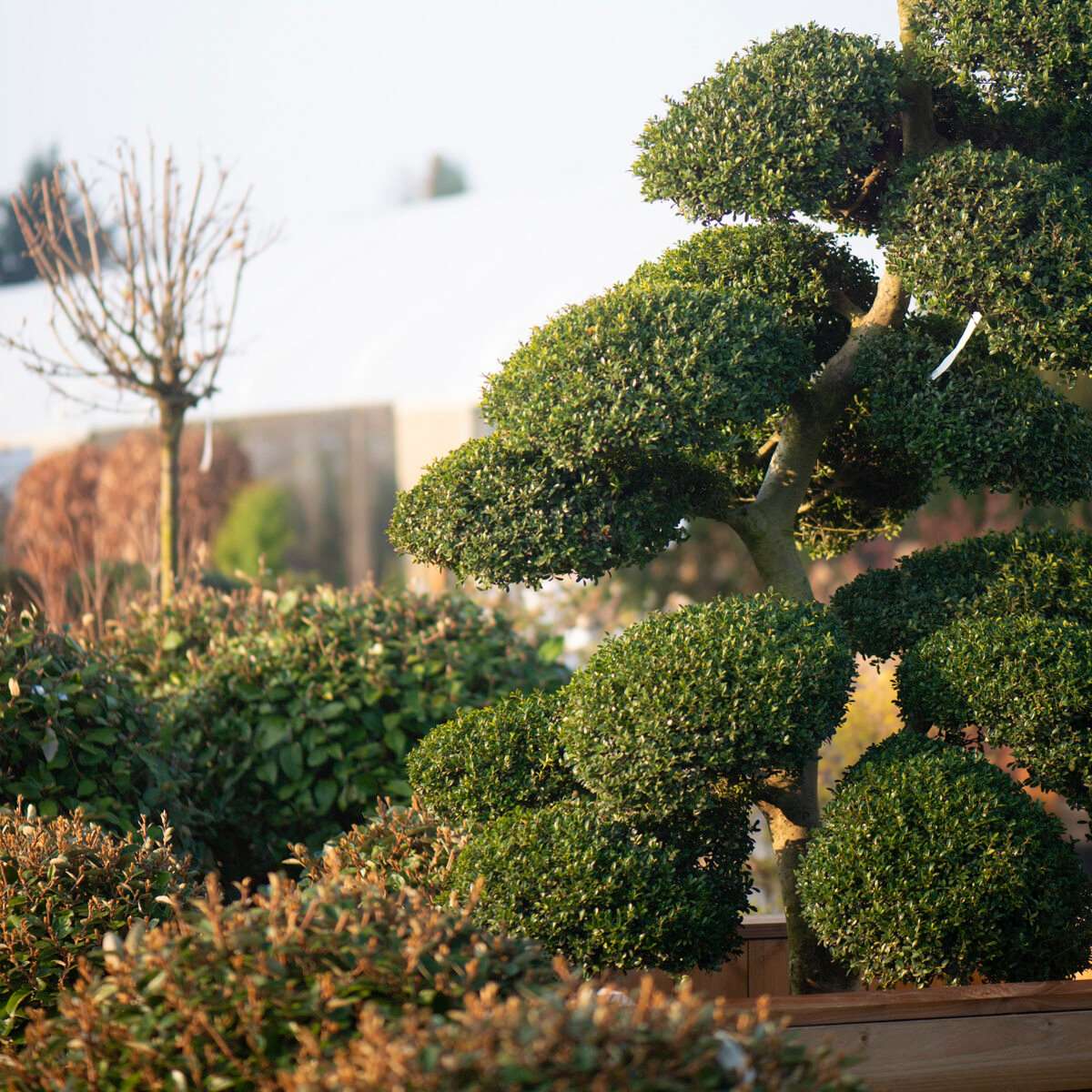
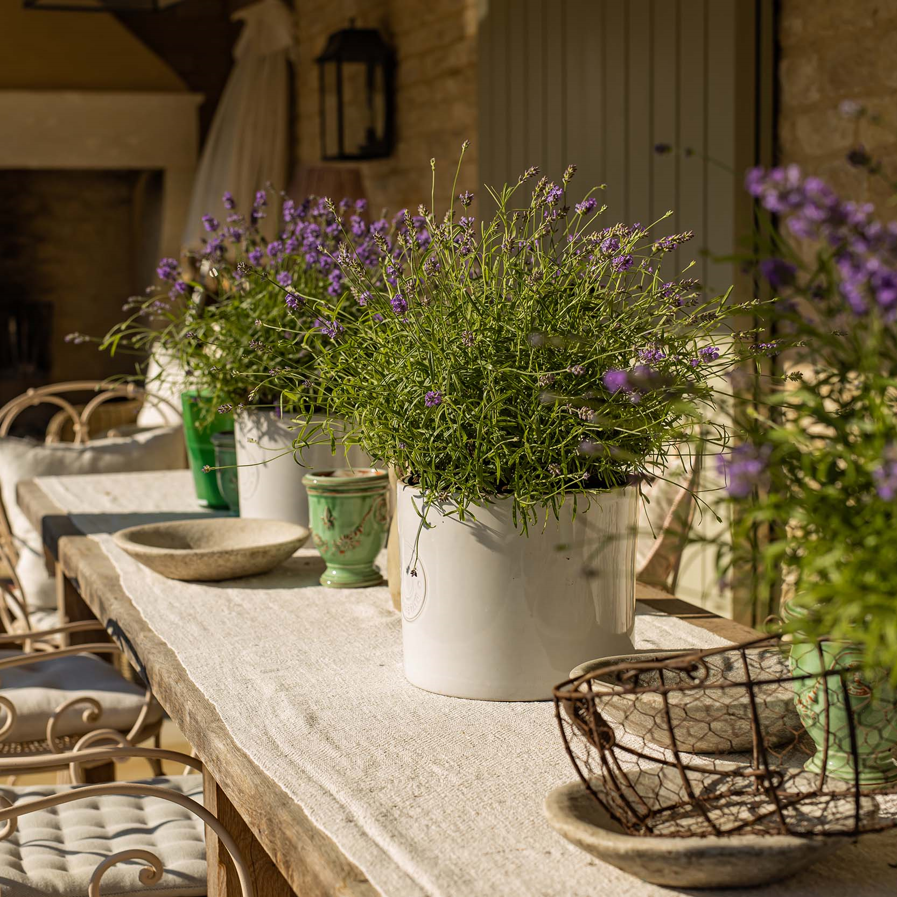
During the winter, plants that are more susceptible to winter weather need to be cared for carefully. Bubble wrapping the pot can stop the growing medium freezing and lukewarm water can unfreeze a pot that has frozen. This can be helpful when dealing with evergreens as they require a supply of water year-round. Fleece can be put around the branches to prevent cold burn and this can also help with too much rain soaking a plant that would prefer to be dry. Although in this case, trying to move the container to an area that can protect from excessive rainfall may be a better option.
Container gardening usually requires more maintenance than growing in the ground but with a little planning, it is possible to keep plants as happy and as healthy in their containers as they would be if planted in the garden. Not everyone has access to a garden and there are many plants that can be kept on a windowsill, a balcony or on a small terrace. At Nicholsons, we have an extensive range of plants which would be suitable for container planting. Come and visit us to find out more and peruse our range of subtle and decorative planters.

